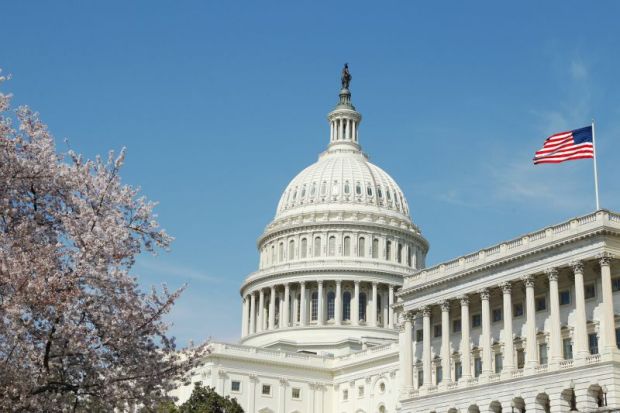The US Congress is finalising a budget agreement for the current year that again increases federal aid for college students and spending on university research over the objections of the Trump administration.
The blueprint was announced this week by House and Senate negotiators representing both parties, then approved by the House of Representatives and sent to the Senate for its expected endorsement.
Altogether, the bill provides nearly $1.4 trillion (£1 trillion) in government spending for fiscal year 2020, which began in October.
Its highlights for higher education include a $150 increase over last year’s level, to $6,345, for the maximum per-student Pell Grant, the main federal subsidy for low-income college students; and a 6.5 per cent budget increase for the National Institutes of Health, the world’s top public funder of biomedical research.
The Trump administration has, in its three years in office, consistently proposed major cutbacks in student aid and university research, and Congress has repeatedly refused.
Overall, the new federal budget provides the Education Department with a record allocation of almost $73 billion, up 2 per cent, despite the Trump administration’s request to cut it by 10 per cent.
Such gains come shortly after Congress agreed to provide $255 million in annual federal support for historically black and other minority-focused institutions.
The actions, the Association of Public and Land-grant Universities said in a statement, mean that “student aid will be both easier to access and will make a modestly increased contribution to the costs borne by students and families”.
Given the deep cuts sought annually by the Trump administration, wrote Matthew Hourihan, the director of budget analysis for the American Association for the Advancement of Science, “this is all a good reminder that Congress still holds the power of the purse”.
Research advocates also gained a policy victory in the budget bill with the inclusion of $25 million for research into gun violence, divided equally between the NIH and the Centers for Disease Control and Prevention.
This is the federal government’s first such dedicated funding for gun violence research in more than two decades, an absence that reflects vigorous lobbying by pro-gun forces hoping to avoid seeing data that might be used to justify arms restrictions.
The budget agreement adds $25 million, for a total of $865 million, for federal Supplemental Educational Opportunity Grants. The Trump administration had asked Congress to eliminate the scheme, which provides an additional boost beyond Pell Grants for low-income students.
The budget bill also raises by $50 million, to $1.2 billion, a federal programme to help college students with work-study employment options that the administration suggested cutting by half.
Along with the NIH increase, the budget boosts spending for the National Science Foundation by 3 per cent, the Defense Department’s basic science account by 3 per cent, and the Department of Energy’s Office of Science by 6 per cent. The administration sought deep cuts in all, most by more than 10 per cent.
The federal government budget agreement, while coming more than two months into the federal fiscal year, is still the earliest since 2015 and avoids a repeat of the month-long partial government shutdown a year ago over Donald Trump’s demands to fund more anti-immigrant walls on the southern US border.




